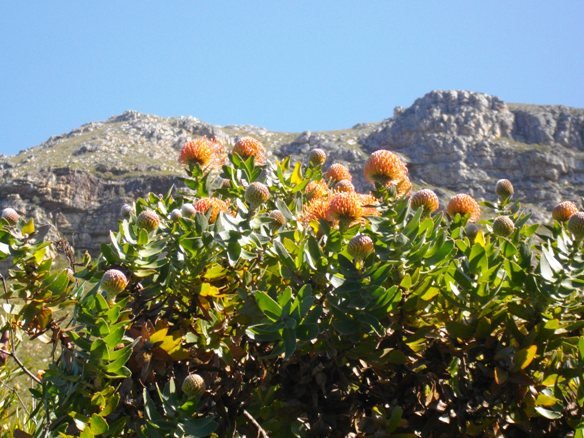Leucospermum cordifolium

Author: Ivan Lätti
Photographer: Thabo Maphisa
The nodding pincushion, as Leucospermum cordifolium is commonly known, occupies a position of favour in the minds of many fynbos lovers. The plant is a rounded shrub bearing drooping branches and reaches heights around 1,5 m. Growing from a single stem, it is a reseeder. The plants last on average for about 20 years.
Both delicate in the curvature of the multitude of styles in each flowerhead and robust in the spreading branches of the dominant shrubs, it catches the eye wherever it is found. The common orange and yellow flower colours vary somewhat, with occasional salmon, apricot or pinkish variations also found. And so does the flowering season vary, depending on the climate of the specific area or the weather of a specific year.
The species distribution is in a small south-westerly part of the Western Cape, from the Kogelberg to Bredasdorp.
The habitat is lower slopes of rocky mountains, covered in fynbos and based on sandstone and shale. The species is considered near threatened in habitat early in the twenty first century, due to agriculture, alien plant invasion and habitat loss caused by other human activity.
An aggravating factor is the plants great popularity in horticulture. Planted cultivars in too close proximity interact with plants in nature, contaminating the gene pool.
Cut flowers of this pincushion last particularly well. Even purists that normally refrain from removing flowers concede that the spring and early summer profusion allows for taking a few without detracting from the appearance of a mature shrub (Manning, 2007; Eliovson, 1967; www.plantzafrica.com; http://redlist.sanbi.org).

